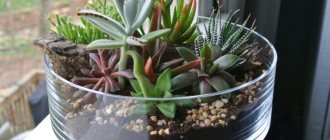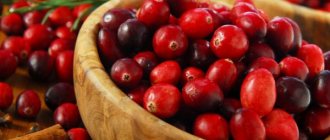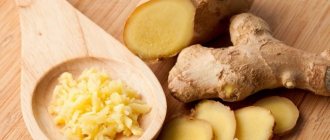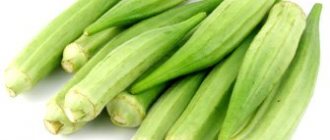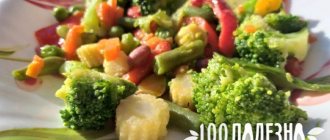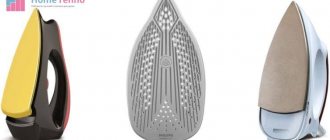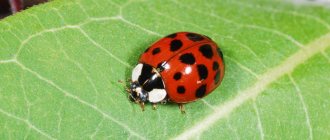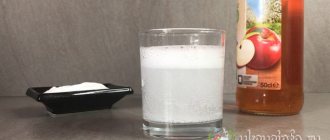Greetings to 100Polezno readers! Today I will tell you how to eat quince correctly. This is the only fruit I know that requires mandatory heat treatment. It is unlikely to be eaten raw: the flesh is hard and tart. And there is no taste - sour, astringent. After heat treatment it becomes much nicer.
Quince doesn't have many vitamins, but it does have a decent dose of antioxidants. The fruits are low in calories and rich in pectin. Properly prepared, they support the immune system, help maintain harmony, and heal the intestines.
Recent research has shown that quince may suppress certain immune cells responsible for allergic reactions. In general, some advantages. It would be nice to eat it more often, but how? I'm telling you.
How to eat quince correctly - the main secrets
Quinces are not eaten fresh. It's like choking on an unripe wild pear. You won't get poisoned, but it's better not to torture yourself. Boiled, baked or stewed, it fully reveals its merits.
There are two varieties that can be eaten raw. I haven't met them. For most varieties, technological maturity occurs a month after harvest. During this time, the fruits gain sweetness, become softer, and gradually improve their taste. But they are clearly not ice. It's better to cook.
For this purpose, fully ripe specimens are selected, bright and evenly colored. They should not be damaged or fall from the tree, but whole, carefully picked.
Before use, the quince is thoroughly washed, fluff is removed from the surface, and the core is cut out. It is not necessary to remove the peel. The closer to the center, the harder the pulp. In addition, it contains dense, stony grains, like some pears. They will not disappear when cooked. Cut off everything you don't like.
To remove the skin, pour boiling water over the halves and cook for 10 minutes. Then rinse with cold water, dry, and clean with a sharp knife. I do it simpler: I cut it lengthwise into pieces, remove the “insides” and the outer part. I divide the resulting “boats” with a knife into small pieces of the required size.
The easiest way to make quince edible:
- place the prepared slices in a saucepan;
- pour sugar syrup (1:5);
- blanch for a quarter of an hour under a closed lid;
- Cool without removing from syrup.
It is eaten immediately or added to cottage cheese, porridge, or in a cupcake instead of raisins.
When cooked, quince is transformed beyond recognition. It becomes tender, tasty, very aromatic. It also helps improve digestion and support immunity during seasonal infections.
Various desserts are made from quince: jelly, marmalade, homemade sweets and marshmallows. It is added to pilaf (cut into cubes and fried in oil), meat stew, sauce. She feels good in fillings for pies and casseroles. I offer several ways to enjoy its benefits.
Contraindications
Due to some substances that make up quince, not everyone is allowed to eat it. Contraindications to the use of quince and dishes with it:
- chronic constipation;
- predisposition to allergies;
- pleurisy;
- individual intolerance;
- enterocolitis.
In a number of situations, the use of quince is not categorically contraindicated, but it must be done with caution. Before eating quince, it is better to consult a doctor. You should eat it with caution when:
- peptic ulcer;
- frequent allergic reactions (fruits irritate the larynx);
- pregnancy;
- high blood clotting;
- lactation;
- constipation
Chicken baked with quince
A tasty and satisfying dish will bring the whole family together at the table. There is no shame in serving it to guests for a holiday. Properly cooked chicken is very appetizing and incredibly flavorful. They eat it hot, but the next day it is also good.
Prepare the following ingredients:
- chicken – 1 pc. weighing up to 2.5 kg,
- large fruits – 2-3 pcs.,
- salt - a tablespoon,
- dried sweet and ground black pepper,
- whey – 1 liter,
- garlic – 2 cloves.
How to cook correctly:
- Wash the chicken, soak in whey, leave in a cool place for 6 hours or overnight. This technique will make the meat softer and juicier. I always do this. Whey can be replaced with white wine, but the cost of the dish will triple.
- Remove, rub outside and inside with a mixture of peppers, crushed garlic, and salt.
- Wash the quince. Remove the fluffy coating, cut into 6-8 slices. Remove the core with seeds. Leave the skin on.
- Place the prepared slices inside the chicken and place the rest around.
- Wrap in foil. Bring the edges together tightly.
- Bake in an oven preheated to 200 degrees for 1.5 hours.
- Just before finishing, unroll and let brown.
How to eat: put a piece of meat and 1-2 slices of aromatic quince on each plate. Serve correctly - with mashed potatoes and fresh vegetables. I baked it with potatoes.
Baked quince
Halves of the same size are first blanched in sweetened water (100 grams of sugar per liter), and then placed in a mold and baked in a preheated oven until cooked.
The pieces should become soft. This usually takes me 40-45 minutes. I sprinkle powdered sugar on top or pour natural honey melted in a water bath. Eat baked quince slightly cooled.
If you want to complicate the dish and make it more interesting, then remove the middle with the seeds. Bake as in the previous version. 5 minutes before readiness, fill the resulting space with a mixture of ground nuts and raisins. Serve cool with ice cream or whipped cream.
What are the beneficial and harmful properties?
Quince is not as popular a fruit as an apple or a pear, but it can easily be called a natural pharmacy:
- potassium normalizes osmotic pressure and acid-base balance of the blood, and also stabilizes the level of cellular and intercellular fluid;
- iron helps increase hemoglobin and improves thyroid function;
- calcium and phosphorus strengthen the human bone skeleton and teeth;
- magnesium eliminates pathogens of nervous disorders and takes part in regulating the functions of the respiratory system;
- pectins envelop the intestinal mucosa, protecting it from irritation;
- Vitamin C fights viruses and bacteria, strengthening the immune system;
- Beta-carotene improves vision and is involved in removing toxins from the body.
Quince in syrup can be stored in a cool, dark place for up to 12 months.
The Persian scientist Avicenna, who lived at the end of the 9th century, used the fruit to relieve indigestion. In addition, he recommended that people with chronic liver diseases and weak stomachs drink a mixture consisting of quince juice, vinegar and honey.
It is recommended to include quince fruits in the diet of men after 30. The beneficial substances that make up the fruit are an excellent prevention of diseases of the urinary tract and prostate gland.
What are the benefits of quince during pregnancy?
Since a woman’s body undergoes physical changes while carrying a child, there is an urgent need for such useful elements as iron, calcium, magnesium, potassium and phosphorus.
All these minerals take part in:
- prevention of iron deficiency anemia;
- formation of organs and systems of the fetus;
- strengthening the mother's blood vessels;
- maintaining shape and normal weight.
Many women in the first trimester of pregnancy experience malaise accompanied by toxicosis. During this period, it is recommended to consume quince, because it has antiemetic properties. The fruits should be boiled and taken 100-120 grams 3 times a day. Women who are breastfeeding should exclude quince from their diet. The fruit causes constipation and bloating in the baby.
Low fat content, the presence of dietary fiber and the absence of cholesterol - all this makes quince a valuable dietary product.
Homemade jellies
What are the contraindications
Overeating quince can be harmful to health and provoke:
- constipation;
- flatulence;
- coarsening of the vocal cords;
- the appearance of allergy symptoms.
Quite apple contains a small amount of sugar. However, people suffering from diabetes should take this fact into account when planning their daily diet.
Quince jam - recipe with walnuts and lemon zest
I think this is the best way to use quince. Both adults and children eat jam with pleasure. It is extremely tasty, tender, fragrant. The amber slices look like marmalade. No candy is needed when there is such yummy food in the house!
Prepare:
- kilogram of quince,
- 0.6 kg sugar,
- lemon,
- a glass of walnuts.
In this recipe I do without pre-blanching. The right syrup is viscous like honey.
What to do:
- Cut as desired. Size 2-3 cm.
- Place in a bowl, add sugar. We are waiting for the juice to appear. It is better to leave it overnight and continue in the morning.
- Place on the fire, bring to a boil, stirring constantly.
- Once it boils, set aside.
- After 5-6 hours we repeat the procedure.
- Then again.
- Throw in the chopped nuts and lemon zest.
- We bring it to readiness.
- Remove from heat.
I don’t see any point in making jam for the winter. By the time the harvest appears, it is already winter. Moreover, such yummy food does not stay stale. I eat it in a couple of days.
Quince jam for the winter - a simple recipe
If you are a supporter of home canning, grab a different recipe.
500 g of granulated sugar is enough per kilogram of raw materials. You will get 2 half-liter jars.
Procedure:
- The washed, peeled, cored quince is cut into slices.
- To soften it, boil it for 15-20 minutes in sugar syrup (100 grams per 0.9 l H2O) and grind through a meat grinder.
- Pour in the rest of the sugar.
- Cook until thickened.
- Place in glass jars prepared in advance (washed, dry).
- Cover with lids, sterilize at low boil for 15 minutes, and seal tightly.
The jam is used as a filling in pies or eaten spread on black bread toast. Just right for tea!
Chemical composition
The nutritional value of quince per 100 grams of product is 48 kilocalories, the ratio of proteins, fats, carbohydrates is 0.6: 0.5: 9.6 grams.
Ripe quince fruits consist of:
- water (82%);
- fructose (6.27%);
- sucrose (2.38%);
- glucose (3.11%);
- citric acid (0.3%);
- chlorogenic acid (0.07%);
- malic acid (0.42%);
- fumaric acid (0.1%);
- tartaric acid (0.06%);
- dietary fiber (2.9%);
- starch (1.5%);
- ash (0.9%).
The amount of organic acids in fruits depends on the time of collection, ripeness and type of fruit tree.
Table No. 1 “Chemical composition of quince”
| Item name | Content per 100 grams of product, milligrams |
| Vitamins | |
| Vitamin C | 23 |
| Beta carotene | 0,4 |
| Vitamin E (TE) | 0,4 |
| Vitamin PP (Niacin Equivalent) | 0,2 |
| Vitamin A (VE) | 0,167 |
| Vitamin PP | 0,1 |
| Vitamin B2 (riboflavin) | 0,04 |
| Vitamin B1 (thiamine) | 0,02 |
| Macronutrients | |
| Potassium | 144 |
| Phosphorus | 24 |
| Calcium | 23 |
| Sodium | 14 |
| Magnesium | 14 |
| Microelements | |
| Iron | 3 |
The skin of quince fruits contains pelargon-ethyl, enanthic-ethyl esters, which give the characteristic odor to the fruit. The seeds contain up to 23% mucus, which determines the enveloping effect of boiled kernels.
They include:
- sugary substances (252.5 mg%);
- amygdalin glycoside (0.505%);
- fatty oil (16.92%);
- aldehyde sugar (1.01%);
- resinous substances (1.06%);
- pectin compounds (8.66%);
- vitamin C (96.2 mg%).
Found in quince leaves:
- tannins (5.26%);
- alkaloids (0.0345%);
- vitamin C (118.2 mg%);
- glycosides (0.281%);
- traces of vitamin K.
Tea with quince - preparing the drink
Quince is not only eaten, but also delicious tea is made from it. It has an antiviral effect, has a good calming effect, and has a diuretic and antiseptic effect. In addition, the drink is bright and very tasty. During the season, I brew it every day.
What is needed:
- Peel half the quince and remove the seeds.
- Wash, cut crosswise into slices 3-4 mm thick.
- Rinse the porcelain teapot with boiling water.
- Pour 2 tsp into it. black or green tea.
- Add fruit slices.
- Fill with hot (not boiling) water.
- Cover with a lid and place a napkin on top.
- Let it brew.
The 4 minute rule doesn't apply here. I leave it for 7-10 minutes so that the quince gives off its taste and aroma. The color will not become dark. I also throw sugar (1 tbsp) or honey into the kettle.
The drink has a beautiful color and delicate taste. It relieves heartburn symptoms, strengthens defenses and relieves irritability.
general characteristics
The height of an adult fruit tree reaches five meters. Quince leaves are similar to the leaves of an apple tree, the inflorescences are large white or pink. The fruits, depending on the variety, have a spherical or pear-shaped configuration and yellow, light lemon, dark yellow color. The size of the fruit resembles a large apple. The quince peel is covered with small fibers, the pulp is low-juicy, astringent, sweetish, aromatic and very hard. The seeds are reddish-brown with a slimy shell on the outside and contain a toxic substance (amygdalin), which gives the fruit the smell of bitter almonds.
The value of quince fruits is determined by the significant content of a complex of vitamins, monosaccharides, and biologically active substances. They have medicinal properties, help with eye diseases, sclerosis, hypertension, sore throat, soften the skin, and have powerful anti-inflammatory, restorative, and antiseptic effects.
The ripening time for aromatic fruits is September-October.
Today the fruit is used in:
- food industry (for the production of preserves, confiture, jam, candied fruits, sauce for meat dishes);
- medicine (as an antibacterial, diuretic, antiulcer agent);
- cosmetology (to cleanse oily skin, improve complexion, strengthen hair).
Healthy dessert – quince in sour cream sauce
You will need:
- half a glass of raisins,
- orange zest,
- sour cream – 1.5 cups,
- 3 large quinces,
- flour – 1/4 cup,
- eggs – 3 pcs.,
- granulated sugar - 1/3 cup.
Recipe:
- The quince is cut into large cubes and stewed in a small amount of liquid until it becomes soft.
- Take out, place in a heat-resistant bowl, sprinkle with grated orange or lemon zest.
- Pour over eggs, beaten with sour cream and flour dried until golden brown.
- Bake in a preheated oven until the top is browned.
Served in the same form. Divide into portions with a silicone spatula and place on saucers. Each serving of dessert is sprinkled with powdered sugar or topped with raspberry jam. They eat with a spoon.
Chicken liver with quince sauce
For a hearty and healthy snack, prepare a package of chicken liver, 2 large fruits and an onion. You will also need 150 ml of white wine, a teaspoon of honey, 0.5 tbsp. vegetable oil, salt, spices and 30 g of flour, fried in a dry frying pan until golden brown.
Procedure:
- Prepare the quince properly (wash with a brush, remove the central part, peel, chop into cubes).
- Heat the oil in a frying pan, fry the onion and fruit for 5 minutes. Stir constantly.
- Pour in the wine, add the remaining ingredients, simmer for 10 minutes. until soft.
- Fry the chicken liver separately until golden brown.
- Transfer to sauce.
- Bring to a boil, remove from heat.
The liver is eaten hot or warm. If you add more fruit, you won't need a side dish. This is a very healthy, nutrient-dense food. It replenishes protein, vitamins and mineral salts, gives strength and good mood.
Storage Features
The optimal place to leave fruit for preservation is a refrigerator, cellar or balcony (during the cold season). For two months it will delight you with its beautiful appearance. But if the temperature is 0-5 degrees, then there is a chance to enjoy it for 4 whole months.
When storing, it is worth considering that it does not tolerate moisture. Therefore, one of the conditions is to wipe the fruit well. To avoid over-wetting, use cotton bags, sand or sawdust. It is also advisable that they do not touch each other.
As you can see, this plant is used anywhere. And this speaks of its magical properties. Therefore, it is worth trying to introduce quince into your diet, or spend a day of cosmetic procedures with this fruit.
Drying quince
Ripe, undamaged berries are washed and cut into slices or circles no more than 5 mm thick. Then blanch for a few seconds in hot water (95-100 degrees), drain into a sieve or colander.
The dried raw materials are placed on a baking sheet and placed in the oven for 5-6 hours. Temperature 50-65 degrees. It is acceptable to use an electric dryer. In the southern regions, quinces are laid out in the sun until completely dry.
Properly dried slices have a pleasant sour taste with a faint sweetness and a specific aroma. The preparation is eaten like other dried fruits and used for making compotes and desserts.
I told you how to eat quince correctly and what is prepared from it. This is a tasty and healthy product that will confidently compete with oranges and other winter fruits. I have given simple recipes that even a beginner can handle. I hope you find one that suits you. Good luck!
